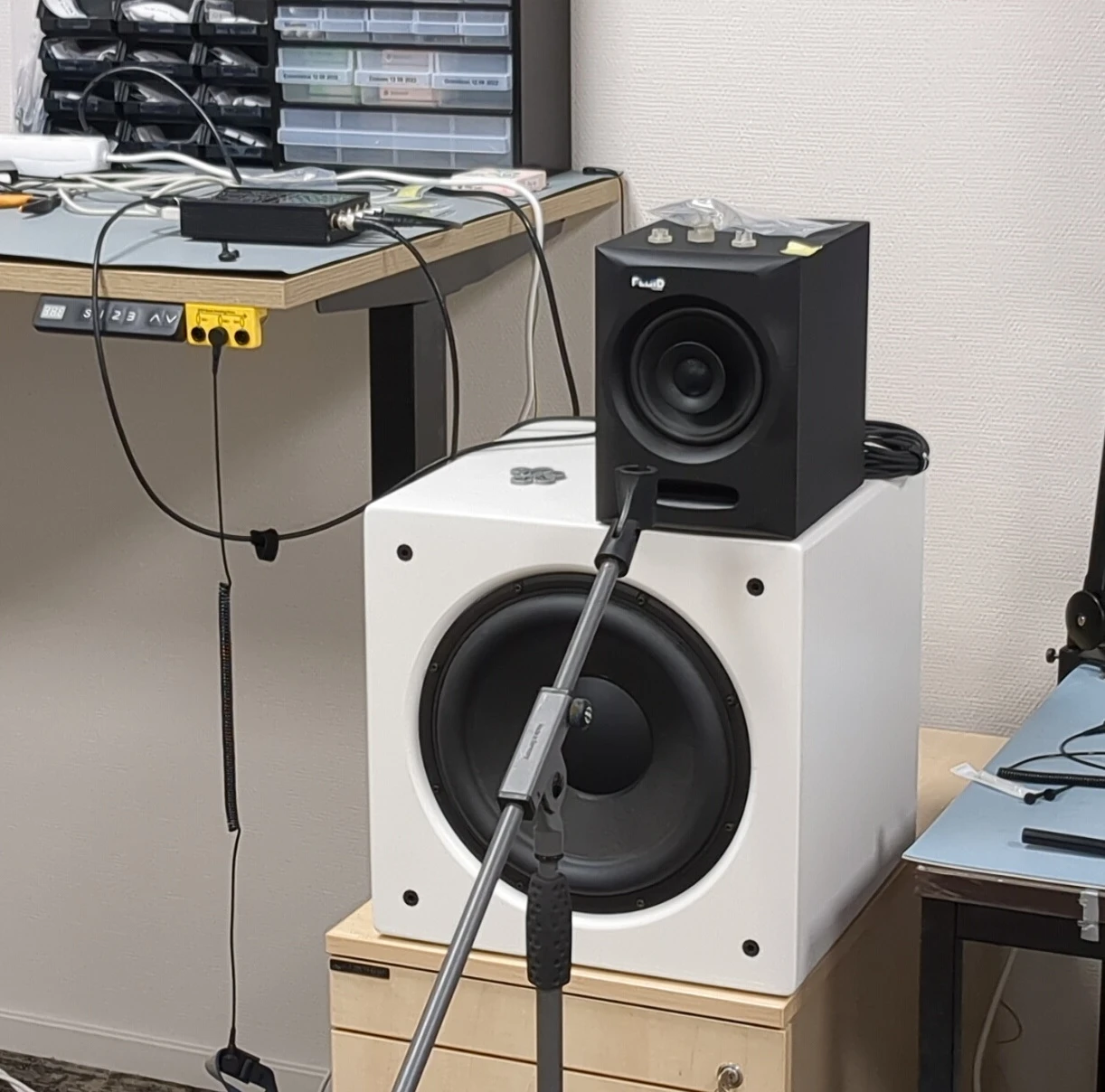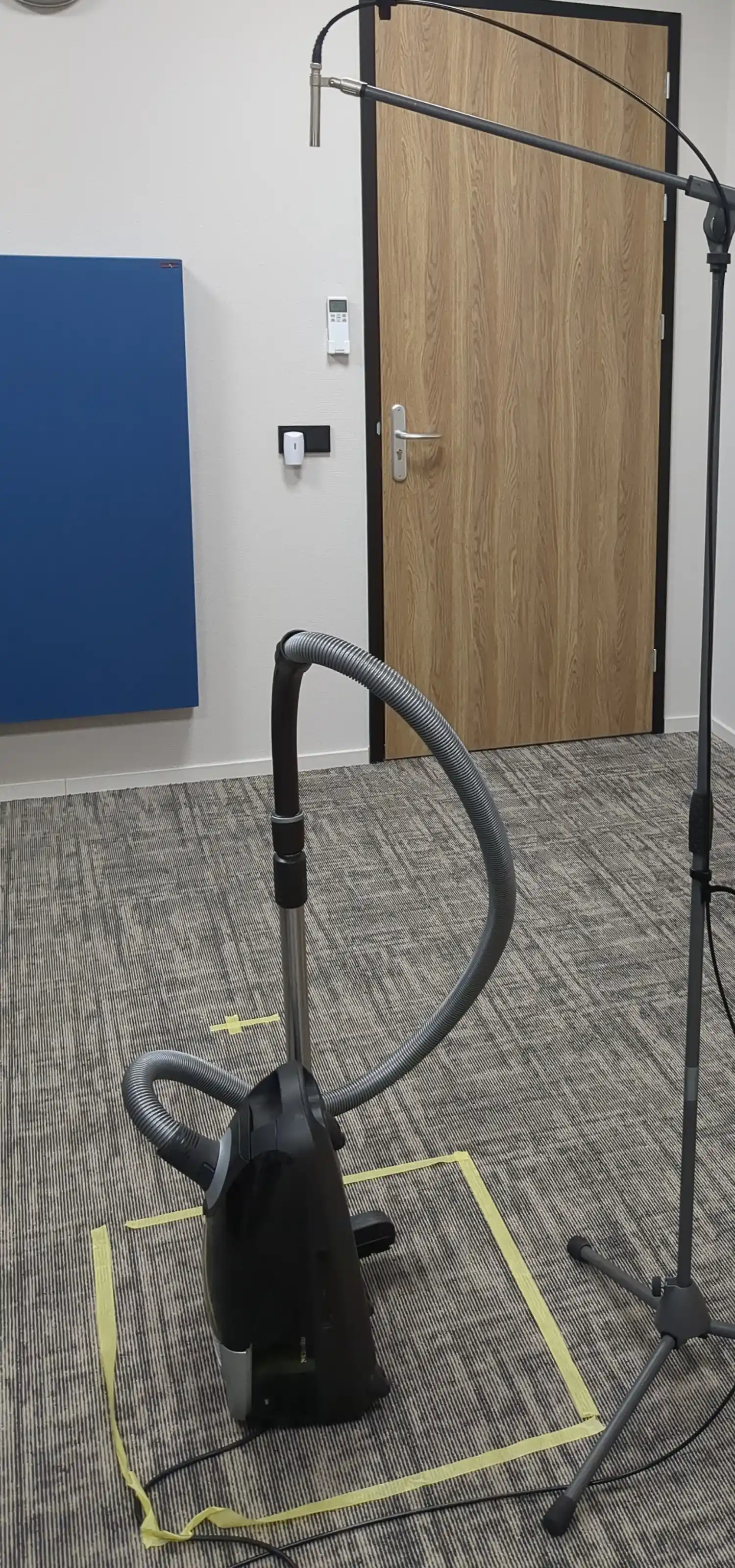

As a producer of innovative new products, it is crucial to exactly know the acoustic specifications. One can think of the resistance of acoustic meshes, where an important trade-off has to be made between resistance to unwanted dirt, or water entrance and the acoustic transparency.
For building acoustics, an important quantity is the sound absorption coefficient of a material. The experimental determination of acoustic material properties requires a proper understanding of physical acoustics, equipment such as an impedance tube and proper mathematical analysis software. ASCEE's acoustic laboratory contains the right tools to effectively characterize acoustic materials.
Acoustic test environment
A short overview of our test equipment:
- 60 m\(^2\) measurement space, well absorbed using absorbing wall panels.
- Several (monitor) speakers & subwoovers
- Data acquisition (4x in, 1x out): DT9837A. This one also cooperates neatly with ACME
- 1x 1/2" DIN EN IEC 61094-4 (class 1) measurement microphone
- 2x 1/4" DIN EN IEC 61094-4 (class 1) measurement microphone
- 1x Sound Level Meter
- Soldering equipment, digital oscilloscope, lot of cables
- IEC 60318-4 Ear Simulator (GRAS RA0402)
- μZ impedance tube in 20 and 30 mm
Ear simulator
Our equipment comprises a GRAS RA0402 ear simulator. This device is used to couple the in-ear acoustic load to an in-ear speaker, or provides the proper testing equipment to test the insertion loss of hearing protection. We have a nearly perfect digital twin of the ear simulator implemented in LRFTubes.
Impedance tube
Our in-house impedance tube is able to characterize acoustic materials, such as porous absorbers and perforated sheets, in a wide frequency range from 40 Hz to 4 kHz. Using our setup and software, we can fully characterize acoustic materials and samples. We can measure / fit:
- Normal incidence sound absorption coefficient (\(\alpha\))
- Reflection coefficient (\(R\))
- Normalized impedance (\(\zeta_n\))
- Acoustic scattering parameters (\(\mathbf{T}\))
- Delaney-Bazley-Miki (DBM) material parameters
- Johnson-Champoux-Allard (JCA) material parameters
Using these parameters, a simulation model can be created to determine the effect of a sound insulation solution in the final application.
Silencer transmission loss
ASCEE is experienced and able to test custom silencer transmission loss, including flow, for ventilation systems according to the ISO 7235:2003.
Anechoic room
As the word implies, an anechoic room is a room without any echoes. This means that all sound is absorbed by the walls of such a room. Anechoic rooms are typically used to create 'ideal' acoustic situations, i.e. a perfect free field for acoustic radiation. We have access to the anechoic wind tunnel of the University of Twente.
- [1]: ISO 10534-2

